#emele-ntouka
Text

Críptido del día: Emele-Ntouka.
Descripción: Su nombre significa "asesino de elefantes" en lengua lingala. Se afirma que el Emela-ntouka tiene aproximadamente el tamaño de un elefante africano de sabana (3.2 m de altura, 6 toneladas de peso), de color entre marrón y gris, con una cola pesada y un cuerpo similar. forma y apariencia de un rinoceronte, incluido un cuerno largo en su hocico. Se supone que cuatro patas cortas, parecidas a muñones, sostienen su enorme y voluminoso cuerpo sobre el nivel del suelo. Se describe que no tiene volantes ni crestas a lo largo del cuello. Se supone que el animal es semiacuático y se alimenta de Malombo y otras plantas frondosas. Se dice que el Emela-ntouka emite una vocalización, descrita como un resoplido, un estruendo o un gruñido. El Emela-Ntouka fue mencionado por su nombre por primera vez en 1954, en un artículo de la revista Mammalia, escrito por el ex inspector de caza de Likouala, Lucien Blancou. Dijo que Emela-Ntouka era "más grande que un búfalo" y habitaba en los pantanos de Likouala. También fue Blancou quien mencionó por primera vez el hecho de que un Emela-Ntouka mata elefantes cuando se le molesta, de forma muy similar al supuestamente famoso odio de los Mokele-mbembe hacia los hipopótamos. Si bien ambos animales son supuestamente herbívoros, también supuestamente comparten un feroz sentido de territorialidad y es por esta razón que se afirma que los pigmeos "le temen más que a cualquier otro animal peligroso". Aproximadamente en 1930, un Emela-Ntouka supuestamente fue asesinado cerca de Dongou.
0 notes
Note
What species of dragons are found in Africa? What clades do they belong to?
ooo so I was wanting to do a Smaugust Post about this but I was unsure how, so I'll just reply to this question with 12 very rushed dragon doodles...
(edit; to be clear this is in my creative project Dracones Mundi, not 'real dragons' or a comprehensive list of mythology. Dragon designs inspired by mythology)

Click the 'keep reading' to learn more!
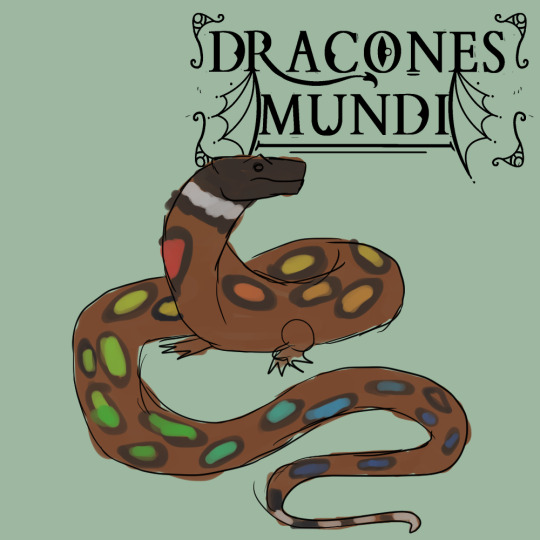
West African Rainbow Serpent (Dracovermidae: Afroserpens iris)
This dragon is specifically a 'west African rainbow serpent' to differentiate been this and the Australian rainbow serpent. The West African Rainbow Serpent is based on West African folklore (Vodun tradition among other things, deities such as Ayedo Wedo etc.) and the physical design is based on an art sculpture of Ayedo Wedo a friend sent me a picture of (black head, white neck collar) + some snakes I like (spots with dark rims) + rainbow gradient.

Grootslang (Dracovermidae: Afroserpens magnus)
A gigantic dragon with diamond eyes said to live in caves under South Africa - looking into South African caves to discover there are vast bodies of water in huge caves was an experience - the above design is a loose idea, the final Grootslang for the Dracones Mundi project may look different...
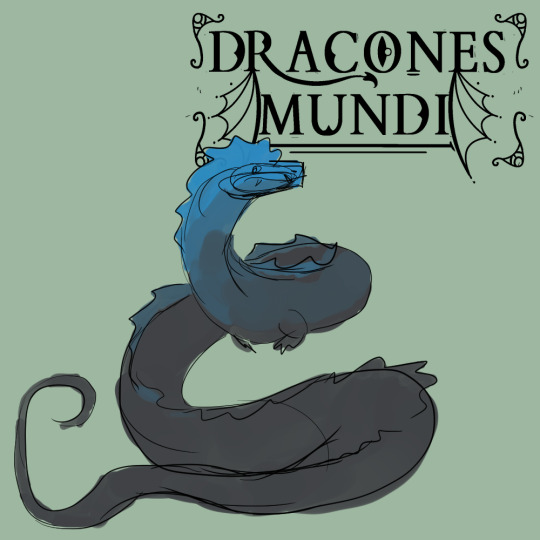
Elephant Eating Serpent (Dracovermidae: Afroserpens aethiopicus)
Based on bestiaries saying 'big serpents in Africa wrap elephants in their coils'.
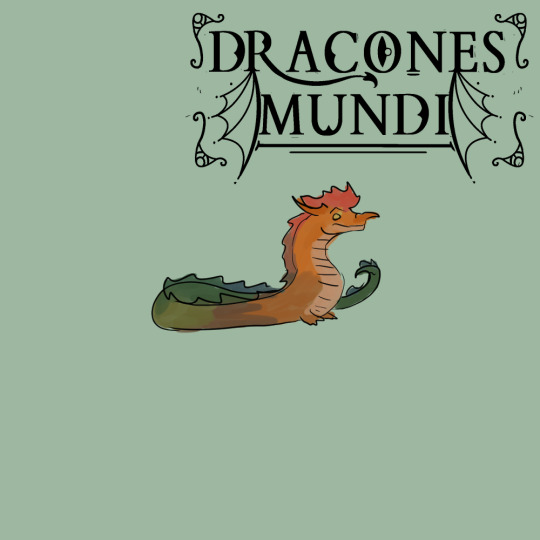
Chicken Headed Serpent (Afroserpens gallocephallus)
I might merge this design with the existing cockatrice design (see further below), only time will tell...
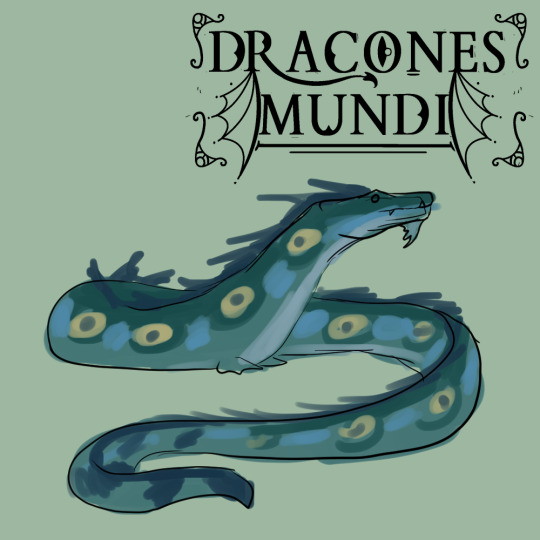
Nile Serpent? (Dracovermidae: Dracovermis hydra)
Huge serpent found in the Nile, and in the Mediterranean. Inspiration for Apep/Apophis in Egypt, but also for the Hydra in Greece.
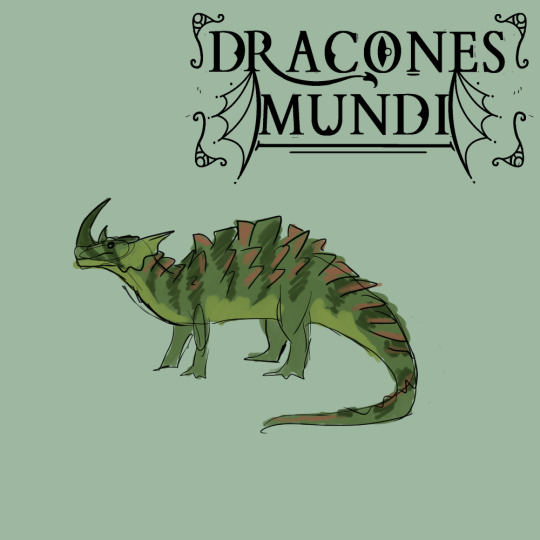
Congan Plated Dragon (Testudracidae: Stegosuchus monstrum)
Large dragon that lives in the Congo Basin - inspired by Mokele Mbembe, Emele Ntouka and Mblieu Mblieu Mblieu
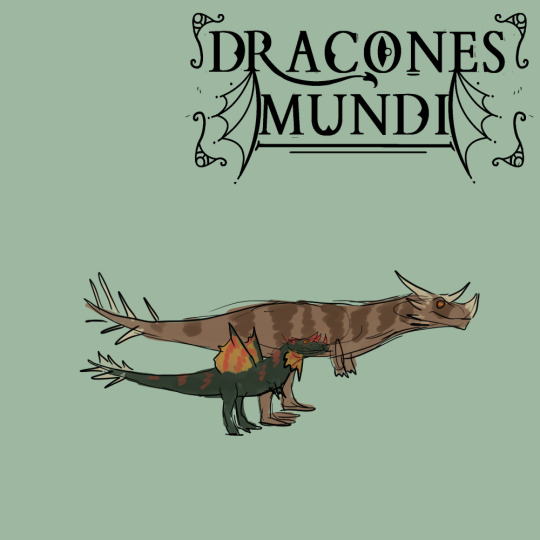
Dinodrakes (Drakonidae: Dinodrako...? )
Silly dragon I put on Madagascar - not inspired by folklore, these are just funny dinosaur inspired dragons. Mr Razzledazzle and his beautiful big wife.

Green Wyvern (Megaviperidae: Megavipera virida)
Based on Europeans slapping a little green dragon on maps of Africa for 'Aethiopia', 'here be dragons'. Also this is Saint George's dragon, so in versions of the legend where the saint fights the dragon in Libya I decided to put the green wyvern in Libya. Green wyverns therefore have a wide distribution in Dracones Mundi as Saint George has fought the dragon throughout North Africa, the Middle East and Europe.

Kongomato (Megaviperidae: ?)
A swimming dragon that lives in Zambia - it can grab boats with it's powerful jaws, swim with it's powerful tail and has huge wings. I am not certain on this final design, working on it...
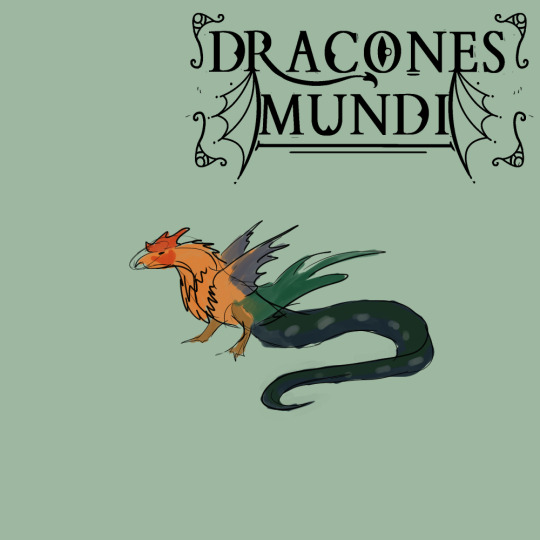
Cockatrice (Medaviperidae: Basilliskos gallimimus)
CHICKEN DRAGON. Very deadly. Found throughout the world, including Africa.
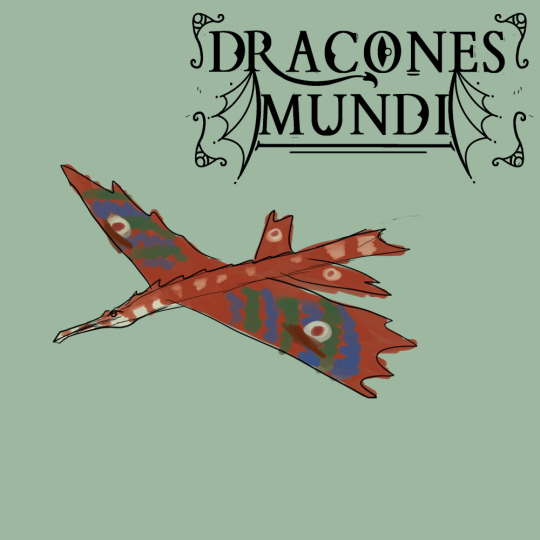
Jaculus (Megaviperidae: Pteraserpens jaculus)
Jaculus, the javeline serpent, can fly at intense speeds, stabbing prey with it's sharp face.
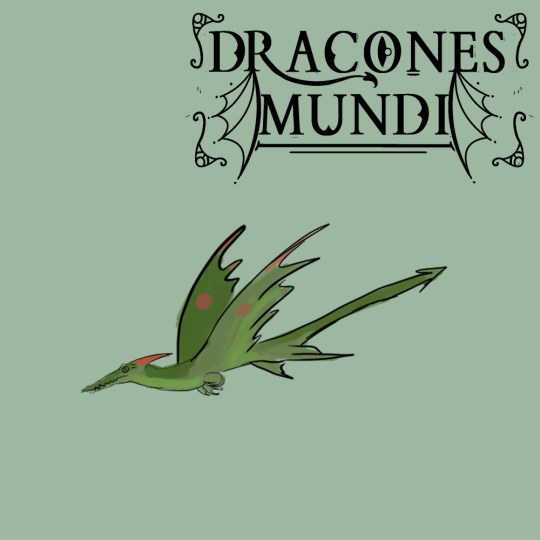
Terrorsaur (Megaviperidae: Pteroserpens...?)
Silly dragon based on "what if janky cartoony green pterodactyls are dragons?" and then I found a lot of cryptozoology places 'pterosaurs' in central Africa. Playing with this concept, nothing solid yet.
...
There are some other African dragons that I'm not sure about including - Ninki Nanka is something I have had on my radar for a while but I could not find enough info on it to write or draw something (recently looked it up again and there is more info wow... Okay next draft will include Ninki Nanka!!!!)
and Akhekhu which I had in a previous draft then abandonned. Might put him back in. Not sure if he's dragony enough?
So in this current roster of African dragons we have 6 inspired by African folklore and mythology (Grootslang, Rainbow Serpent, Nile Serpent, Congan Plated Dragon, Kongomato, Chicken Headed Serpent) 4 inspired by European mythology saying 'this lives in Africa' (Cockatrice, Green wyvern, Jaculus, Elephant Eating Serpent) and 2 I made up just for fun (Dinodrakes and Terrorsaurs)
129 notes
·
View notes